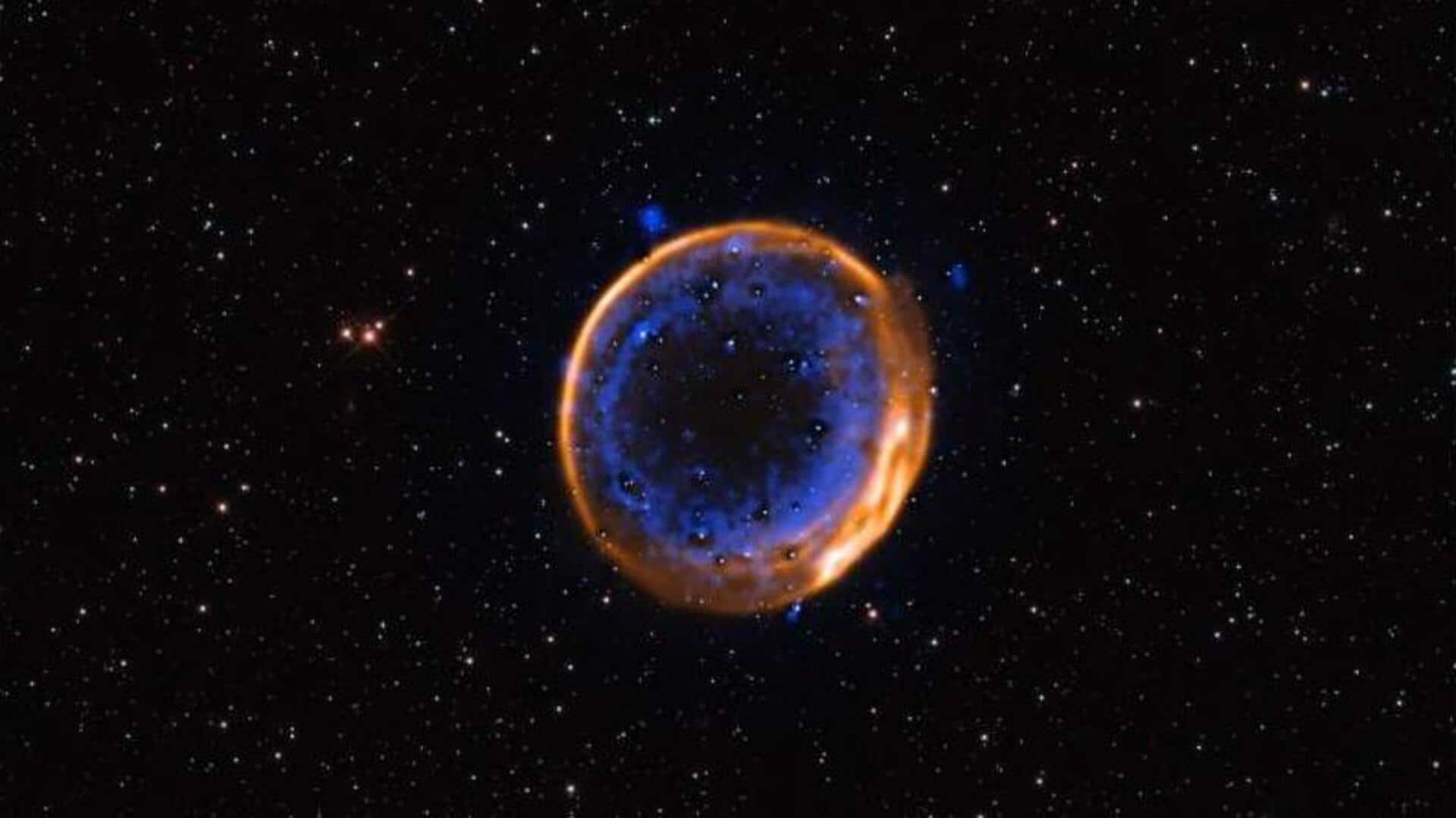
Watch: This star met its end by exploding twice
What's the story
Astronomers have confirmed for the first time that a star met its end in a double detonation. The confirmation comes from an analysis of the remains of supernova SNR 0509-67.5 with the European Southern Observatory's Very Large Telescope. The research, published in Nature Astronomy, sheds new light on some of the most important explosions in the universe.
Stellar explosions
How do Type Ia supernovae explode?
Most supernovae are the explosive ends of massive stars. But a specific type, known as Type Ia supernovae, comes from white dwarfs. These small, inactive cores are left behind when stars like our Sun exhaust their nuclear fuel. "The explosions of white dwarfs play a crucial role in astronomy," said Priyam Das, a Ph.D. student at the University of New South Wales Canberra who led the study on SNR 0509-67.5.
Evolution
Single v/s double detonation scenario
In the most popular theory of Type Ia supernovae, a white dwarf in a binary star system steals material from its companion star. This process continues until the dwarf reaches a critical mass and explodes in a single blast. However, recent studies suggest that some Type Ia supernovae may be better explained by a double explosion before reaching this critical mass.
Stellar fingerprint
Discovery in the remnant of SNR 0509-67.5
Astronomers have now detected a unique pattern in the remains of SNR 0509-67.5, that supports the double-detonation theory. The team discovered two layers of calcium in the supernova's remnants via ESO's VLT and its Multi Unit Spectroscopic Explorer (MUSE). This finding provides strong evidence that Type Ia supernovae can take place before their parent white dwarf reaches a critical mass.
Cosmic measuring tape
Why are Type Ia supernovae important?
Type Ia supernovae are crucial for understanding the universe. Their consistent behavior as well as predictable brightness make them excellent tools for measuring distances in space. Astronomers used these stellar explosions as a cosmic measuring tape to find out the accelerating expansion of the universe, a finding that won the Physics Nobel Prize in 2011. Studying their explosions can help us understand why they have such predictable brightness.